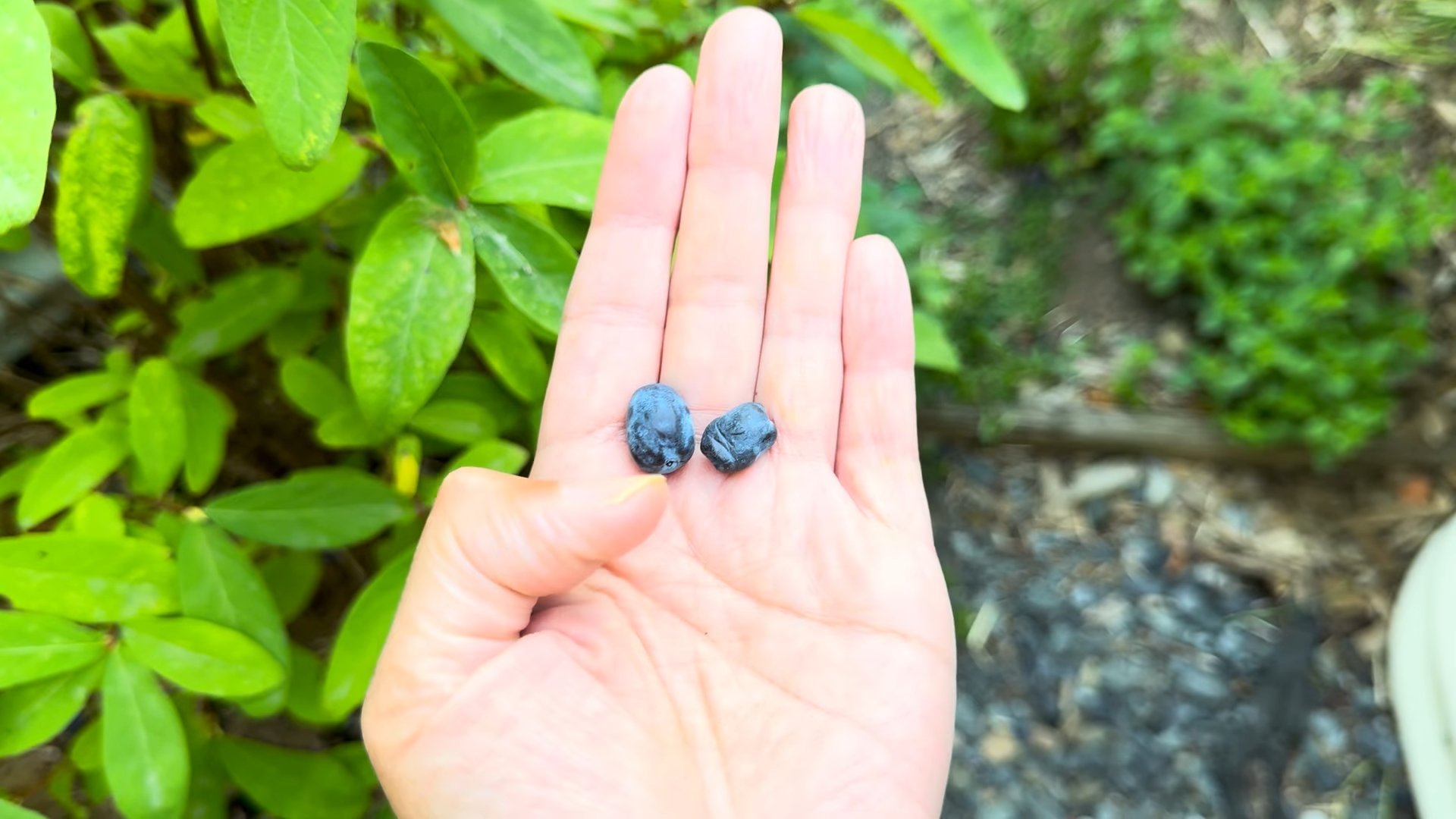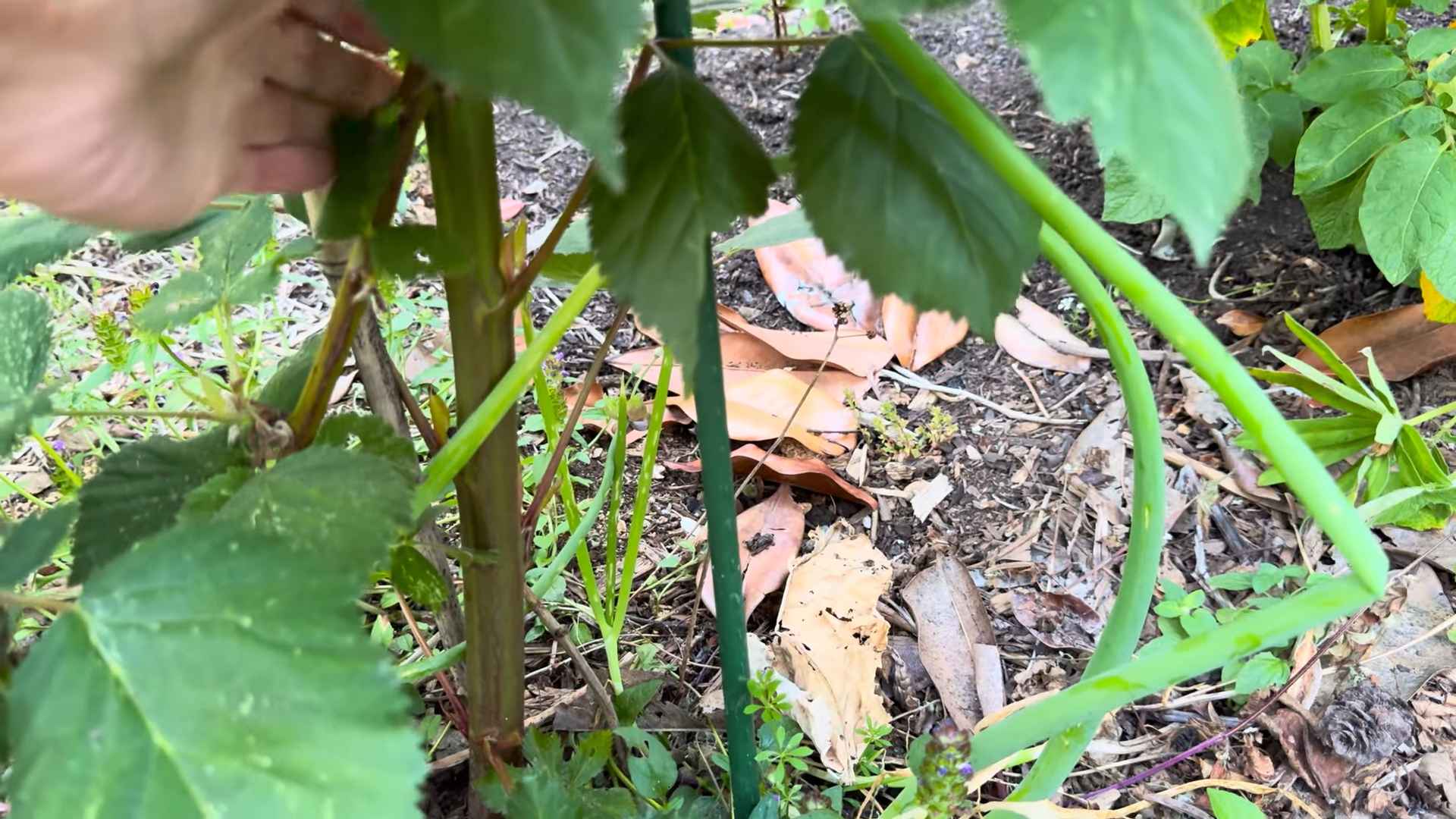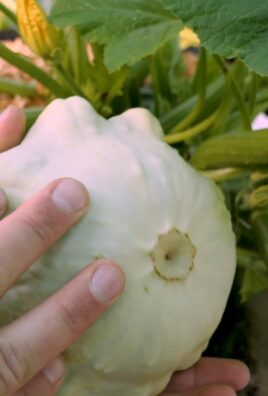Growing Honeyberry Bushes might seem like a daunting task, but trust me, it’s more rewarding than you can imagine! Imagine stepping into your backyard and plucking sweet, tangy berries straight from the bush – a taste of summer that you cultivated yourself. For centuries, these hardy berries, also known as Haskap, have been cherished in colder climates of Russia and Japan, prized for their early ripening and exceptional nutritional value. Now, you can bring this delicious tradition to your own garden with a few simple DIY tricks.
Why should you consider adding these to your garden? Well, beyond the incredible flavor, growing honeyberry bushes offers a fantastic way to extend your harvest season. They’re among the first fruits to ripen in the spring, often before strawberries! Plus, they’re incredibly low-maintenance and resistant to pests and diseases, making them perfect for beginner gardeners like myself. In this article, I’ll share my favorite DIY hacks and tips to ensure your honeyberry bushes thrive, providing you with years of delicious and healthy harvests. Get ready to unlock the secrets to successfully growing honeyberry bushes and transform your backyard into a berry-filled paradise!

Growing Honeyberry Bushes: A DIY Guide to Sweet Success
Hey there, fellow gardening enthusiasts! I’m so excited to share my experience with growing honeyberry bushes. These hardy, early-fruiting shrubs are a fantastic addition to any garden, offering delicious berries even before strawberries are ready. I’ve learned a lot through trial and error, and I’m here to guide you through the process, from choosing the right varieties to harvesting your own sweet bounty.
Choosing Your Honeyberry Varieties
Before you even think about planting, you need to select the right honeyberry varieties. This is crucial because honeyberries require cross-pollination to produce fruit. That means you need at least two different varieties that bloom at the same time.
* Why Cross-Pollination Matters: Honeyberries aren’t self-pollinating, so planting just one variety will result in little to no fruit. Think of it like needing a dance partner – they need each other to make the magic happen!
* Popular Varieties: Some popular and reliable varieties include ‘Aurora’, ‘Honeybee’, ‘Borealis’, ‘Indigo Gem’, ‘Indigo Treat’, and ‘Tundra’. I personally recommend starting with ‘Aurora’ and ‘Honeybee’ as they are known to be good pollinators for each other and produce abundant fruit.
* Bloom Time Compatibility: Make sure the varieties you choose have overlapping bloom times. Most nurseries will indicate the bloom time for each variety. If you’re unsure, ask the nursery staff for recommendations.
* Berry Flavor and Size: Consider the flavor and size of the berries. Some varieties are sweeter, while others are more tart. Berry size also varies, with some producing larger, more elongated berries. Read descriptions carefully to find varieties that suit your taste.
* Plant Size and Growth Habit: Honeyberry bushes can vary in size and growth habit. Some are more upright, while others are more spreading. Consider the space you have available and choose varieties that will fit comfortably in your garden.
Preparing the Planting Site
Honeyberries are relatively adaptable, but they thrive in well-drained soil with plenty of sunlight. Here’s how I prepare my planting site:
* Sunlight: Honeyberries need at least 6 hours of sunlight per day for optimal fruit production. Choose a location that receives full sun or partial shade.
* Soil Drainage: Well-drained soil is essential. Honeyberries don’t like to sit in soggy soil, which can lead to root rot. If your soil is heavy clay, amend it with compost, peat moss, or other organic matter to improve drainage.
* Soil pH: Honeyberries prefer slightly acidic soil with a pH between 6.0 and 7.0. You can test your soil pH using a soil testing kit or by sending a sample to your local agricultural extension office. If your soil is too alkaline, you can lower the pH by adding sulfur or peat moss.
* Weed Removal: Clear the planting area of all weeds and grass. Weeds compete with honeyberries for nutrients and water, so it’s important to remove them before planting.
* Soil Amendment: Dig in plenty of compost or other organic matter to improve soil fertility and drainage. I usually add a generous amount of compost to the planting hole and mix it well with the existing soil.
Planting Your Honeyberry Bushes
Now for the fun part – planting your honeyberry bushes!
1. Dig the Planting Hole: Dig a hole that is twice as wide as the root ball and just as deep. This will give the roots plenty of room to spread out.
2. Remove the Plant from the Container: Gently remove the honeyberry bush from its container. If the roots are circling the pot, gently loosen them with your fingers.
3. Position the Plant in the Hole: Place the honeyberry bush in the hole, making sure the top of the root ball is level with the surrounding soil.
4. Backfill the Hole: Backfill the hole with the amended soil, gently firming it around the roots.
5. Water Thoroughly: Water the newly planted honeyberry bush thoroughly to settle the soil and provide moisture to the roots.
6. Mulch: Apply a layer of mulch around the base of the plant to help retain moisture, suppress weeds, and regulate soil temperature. I like to use wood chips or shredded bark.
Caring for Your Honeyberry Bushes
Once your honeyberry bushes are planted, it’s important to provide them with proper care to ensure they thrive and produce abundant fruit.
* Watering: Water regularly, especially during dry periods. Honeyberries need consistent moisture, especially when they are young and establishing their roots. Aim for about 1 inch of water per week.
* Fertilizing: Fertilize in the spring with a balanced fertilizer. I use a slow-release fertilizer specifically formulated for berries. Follow the instructions on the fertilizer package.
* Pruning: Prune honeyberry bushes in late winter or early spring to remove dead, damaged, or crossing branches. Pruning helps to improve air circulation and sunlight penetration, which can increase fruit production. Honeyberries fruit on old wood, so avoid heavy pruning.
* Weed Control: Keep the area around the honeyberry bushes free of weeds. Weeds compete with honeyberries for nutrients and water.
* Pest and Disease Control: Honeyberries are generally pest and disease resistant. However, it’s important to monitor your plants regularly for any signs of problems. If you notice any pests or diseases, take action promptly to prevent them from spreading.
Protecting Your Berries from Birds
One of the biggest challenges of growing honeyberries is protecting them from birds. Birds love honeyberries just as much as we do, and they can quickly strip your bushes bare. Here are a few strategies I’ve used to protect my berries:
* Netting: The most effective way to protect your berries from birds is to cover your bushes with netting. Be sure to choose a netting with small enough holes to prevent birds from getting through. Secure the netting tightly to the ground to prevent birds from getting underneath.
* Bird Scare Devices: Bird scare devices, such as reflective tape, scarecrows, and noisemakers, can help to deter birds from your honeyberry bushes. However, birds can become accustomed to these devices over time, so it’s important to rotate them regularly.
* Planting Decoy Plants: Planting decoy plants, such as serviceberries or elderberries, can help to distract birds from your honeyberry bushes. Birds may prefer these other berries, leaving your honeyberries untouched.
Harvesting Your Honeyberries
Harvesting honeyberries is a rewarding experience. The berries are typically ready to harvest in late spring or early summer, before strawberries.
1. Check for Ripeness: Honeyberries are ripe when they are a deep blue color and easily detach from the bush.
2. Gently Pick the Berries: Gently pick the berries from the bush, being careful not to damage the plant.
3. Taste Test: Taste a few berries to make sure they are ripe. Honeyberries can vary in sweetness, so it’s important to taste them before harvesting the entire crop.
4. Harvest Regularly: Harvest your honeyberries regularly as they ripen. This will encourage the plant to produce more fruit.
5. Store Your Harvest: Store your harvested honeyberries in the refrigerator for up to a week. You can also freeze them for longer storage.
Using Your Honeyberries
Honeyberries are delicious eaten fresh, but they can also be used in a variety of recipes. Here are a few of my favorite ways to use honeyberries:
* Fresh Eating: Simply wash and eat them fresh! They’re a perfect snack.
* Jams and Jellies: Honeyberries make delicious jams and jellies. Their unique flavor adds a special touch to your breakfast toast.
* Pies and Cobblers: Use honeyberries in pies and cobblers for a sweet and tart treat.
* Smoothies: Add honeyberries to your smoothies for a boost of antioxidants and flavor.
* Ice Cream: Make honeyberry ice cream for a refreshing summer dessert.
* Wine: Some people even make honeyberry wine! I haven’t tried this myself, but I’ve heard it’s quite good.
Troubleshooting Common Problems
Even with the best care, you may encounter some problems when growing honeyberry bushes. Here are a few common problems and how to address them:
* Lack of Fruit: If your honeyberry bushes are not producing fruit, it could be due to a lack of cross-pollination. Make sure you have at least two different varieties planted that bloom at the same time.
* Poor Growth: If your honeyberry bushes are not growing well, it could be due to poor soil drainage, lack of sunlight, or nutrient deficiencies. Amend the soil, provide more sunlight, and fertilize regularly.
* Pest Infestations: Honeyberries are generally pest resistant, but they can occasionally be attacked by aphids or other pests. Treat infestations with insecticidal soap

Conclusion
So, there you have it! Growing honeyberry bushes isn’t just a gardening project; it’s an investment in your health, your garden’s biodiversity, and a delicious future harvest. We’ve explored the ins and outs of cultivating these resilient and rewarding plants, from selecting the right varieties to ensuring optimal growing conditions. The ease with which you can establish and maintain honeyberry bushes makes them a must-try for both seasoned gardeners and those just starting their green-thumb journey.
Why is this DIY trick a must-try? Because it offers a unique opportunity to enjoy fresh, antioxidant-rich berries straight from your backyard, without the hefty price tag often associated with purchasing them. Imagine the satisfaction of picking your own honeyberries, knowing you nurtured them from tiny plants to bountiful producers. Plus, honeyberries are incredibly versatile in the kitchen.
Ready to take your honeyberry harvest to the next level? Consider these variations and suggestions:
* **Espalier Training:** Train your honeyberry bushes against a wall or fence for a visually stunning and space-saving display. This method also improves air circulation, reducing the risk of fungal diseases.
* **Companion Planting:** Plant beneficial herbs and flowers around your honeyberry bushes to attract pollinators and deter pests. Marigolds, lavender, and borage are excellent choices.
* **Honeyberry Jam Extravaganza:** Experiment with different flavor combinations when making honeyberry jam. Try adding a touch of lemon zest, ginger, or even a hint of chili for a unique twist.
* **Frozen Honeyberry Treats:** Freeze your honeyberries and add them to smoothies, yogurt parfaits, or even cocktails for a refreshing and healthy treat.
* **Honeyberry Wine or Liqueur:** For the adventurous, consider fermenting your honeyberries into wine or liqueur. The unique flavor profile of honeyberries lends itself well to these types of beverages.
Don’t be intimidated by the prospect of growing your own honeyberries. With a little planning and effort, you can enjoy a bountiful harvest for years to come. The key is to provide the right conditions, including well-drained soil, adequate sunlight, and regular watering. Remember to choose at least two different varieties for cross-pollination, which is essential for fruit production.
We encourage you to embark on this rewarding gardening adventure and experience the joy of growing your own honeyberry bushes. Share your experiences, successes, and challenges with us in the comments below. We’d love to hear about your favorite honeyberry varieties, your go-to recipes, and any tips or tricks you’ve discovered along the way. Let’s create a community of honeyberry enthusiasts and spread the word about these amazing plants!
Now, get out there and start growing your own honeyberry bushes! You won’t regret it.
Frequently Asked Questions (FAQ)
What are the best honeyberry varieties to grow?
Choosing the right honeyberry varieties is crucial for a successful harvest. Some popular and reliable options include ‘Aurora,’ ‘Honeybee,’ ‘Borealis,’ and ‘Indigo Gem.’ ‘Aurora’ is known for its large, flavorful berries and upright growth habit. ‘Honeybee’ is an excellent pollinator for other varieties and produces sweet, juicy berries. ‘Borealis’ is a compact variety that’s well-suited for smaller gardens. ‘Indigo Gem’ is prized for its early ripening and high yields. Remember to plant at least two different varieties for cross-pollination. Consider your local climate and growing conditions when making your selection. Local nurseries can often provide recommendations based on what thrives in your area.
How much sunlight do honeyberry bushes need?
Honeyberry bushes thrive in full sun, which means they need at least six hours of direct sunlight per day. While they can tolerate partial shade, a sunny location will result in higher yields and sweeter berries. If you live in a hot climate, providing some afternoon shade can help prevent the berries from scorching. When planting, choose a location that receives ample sunlight throughout the growing season.
What type of soil is best for honeyberry bushes?
Honeyberry bushes prefer well-drained soil that is rich in organic matter. They can tolerate a range of soil types, but they will perform best in slightly acidic soil with a pH between 6.0 and 6.8. Before planting, amend the soil with compost or other organic matter to improve drainage and fertility. Avoid planting in heavy clay soil, as this can lead to root rot. If your soil is poorly drained, consider planting your honeyberry bushes in raised beds or containers.
How often should I water my honeyberry bushes?
Water your honeyberry bushes regularly, especially during dry periods. Young plants need more frequent watering than established plants. Aim to keep the soil consistently moist, but not waterlogged. A good rule of thumb is to water deeply once or twice a week, depending on the weather conditions. Mulching around the base of the plants can help retain moisture and suppress weeds.
When do honeyberry bushes produce fruit?
Honeyberry bushes are early producers, typically ripening their fruit in late spring or early summer, often before strawberries. The exact timing will depend on your climate and the specific variety you are growing. Expect your honeyberry bushes to start producing fruit within one to two years of planting. As the plants mature, they will produce increasingly larger yields.
Do honeyberry bushes need pruning?
Honeyberry bushes require minimal pruning. Focus on removing any dead, damaged, or crossing branches. Pruning is best done in late winter or early spring, before new growth begins. Avoid heavy pruning, as this can reduce fruit production. The goal is to maintain an open and airy structure that allows for good air circulation and sunlight penetration.
Are honeyberry bushes susceptible to pests and diseases?
Honeyberry bushes are generally resistant to pests and diseases. However, they can occasionally be affected by aphids, spider mites, or powdery mildew. Monitor your plants regularly and take action if you notice any signs of infestation or disease. Insecticidal soap or horticultural oil can be used to control aphids and spider mites. Fungicides can be used to treat powdery mildew. Proper air circulation and sunlight exposure can help prevent fungal diseases.
How do I protect my honeyberry bushes from birds?
Birds love honeyberries, so it’s important to protect your plants from them. The most effective way to do this is to cover your bushes with netting. Choose a netting with small holes to prevent birds from getting caught. You can also use bird repellent devices, such as scarecrows or reflective tape.
Can I grow honeyberry bushes in containers?
Yes, honeyberry bushes can be grown in containers, making them a great option for gardeners with limited space. Choose a large container with good drainage. Use a high-quality potting mix that is rich in organic matter. Water regularly and fertilize as needed. Container-grown honeyberry bushes may need to be protected from extreme temperatures during the winter.
How do I fertilize my honeyberry bushes?
Fertilize your honeyberry bushes in early spring with a balanced fertilizer. Look for a fertilizer that is specifically formulated for berries or fruit trees. Follow the instructions on the fertilizer package. Avoid over-fertilizing, as this can damage the plants. You can also amend the soil with compost or other organic matter to provide a slow-release source of nutrients.




Leave a Comment